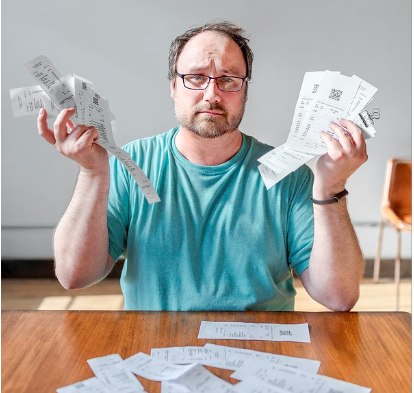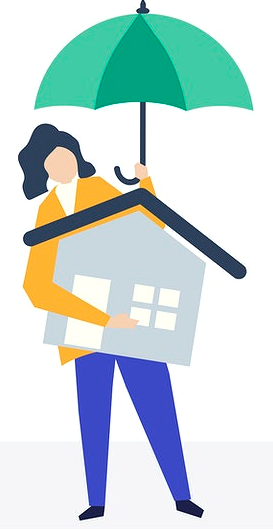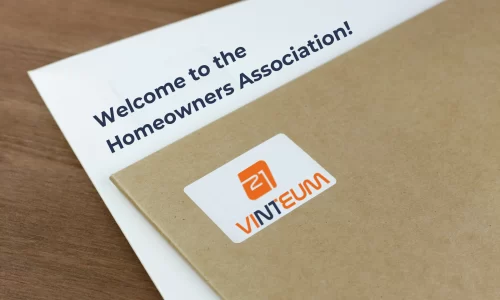HOA Maintenance requires organization and proactivity. The board of directors needs to ensure strategies that quickly respond to repairs needs. At the same time, they need to perform inspections and apply preventive maintenance to avoid surprises. This can be difficult. Particularly, when dealing with confused residents. Many are not clear about whose responsibilities it is to cover and perform maintenance activities.
In this article, we address this common confusion. We also go through three major maintenance risks and how to avoid them. Last but not least, we share some best practices that you can easily apply.
What is HOA Maintenance?
Put simply, HOA maintenance is all activities that are meant to preserve an HOA’s common areas. Common areas include amenities, landscaping, and sidewalks. It may also include other areas, depending on your HOA. Maintenance involves preventing damage, inspecting, assessing, repairing, and fixing these areas. HOA maintenance plays an important role in the well-being of a community. A well-maintained community increases residents’ satisfaction. It also increases the value of the properties in the association.
HOA Maintenance Responsibilities
Anytime someone has doubts about who is responsible for what maintenance the declaration of covenants (CC&Rs) will probably help clear them out. It’s the best place to find out the maintenance responsibilities of the HOA/Board and the homeowners.
Association/Board Responsibilities
Usually, it is the association’s responsibility to handle maintenance activities for communal spaces. The board must:
- Communicate rules to residents to prevent damages
- Conduct regular inspections and take pictures
- Work hand in hand with vendors and contractors
- Oversee budget, handle fees and make payments
Homeowner Responsibilities
Usually, it is the homeowner’s responsibility to upkeep their property. When you decide to buy a property in a community association you agree to the standards laid out in the CC&Rs. This means you’re legally bound to follow some maintenance and aesthetic rules for your house and lot. For instance, you should:
- Inspect your property
- Notify the board of any repairs that may affect some rules
- Contact vendors and contractors by yourself
- Pay for the repairs or renovations
Who pays for the maintenance of common areas?
Residents pay for the maintenance of common areas through their HOA dues. A homeowner association fee is normally paid every month by the homeowner to the HOA. In some communities, it can be paid quarterly or even yearly. These allowances go to a fund that the board uses to pay maintenance services. Occasionally, the board may have difficulty handling the budget. Besides, major unbudgeted maintenance costs can happen and have to be paid. In these cases, the reserve funds may not be sufficient to sustain repairs. Board members then need to make an assessment and require residents to pay extra fees.
Who pays for damage to common areas?
This highly depends on whose fault the damage is. If a resident caused damage to an amenity for example, then the board would pay for the expenses and bill the resident for reimbursement.
If it is normal wear and tear, the board will pay for it. They create a budget every year that includes enough to pay for maintenance.
Who pays for damages to a home lot?
In general, the homeowner is the one to pay for repairs in its home. Unless the damage was caused by the negligence of the association. In that case, either the homeowner pays for it and then can bill the association for reimbursement. Or, in some cases, the association pays directly.
It’s important to note that we’re addressing these questions in general terms. So, this information can slightly differ depending on your HOA governing documents. That’s why it’s essential to read them and rely on them above anything else. If you’ve read them and still are confused, we recommend you contact an attorney specializing in HOA matters.
HOA Maintenance Risks
Reactive Maintenance
There are a couple of important differences between preventive and reactive maintenance. Further in the article, we’ll explain why we recommend being preventive. But here, we are warning you about the risks of being reactive.
In this case, reactivity can be summarized by this common saying: “if it’s not broken, don’t fix it”.In fact, some HOAs prefer not to do any repairs until something is broken. That’s mainly because they want to preserve the reserve funds and avoid assessments. So they choose not to invest in inspections and repairs. This style of maintenance can also be the result of poor management from the board. Leading a community can be overwhelming and some preventive chores may be forgotten. Either way, this can have heavy consequences on your community.
High Maintenance Costs and HOA Fees
Like we mentioned above, residents pay for maintenance costs through their dues. It might sound obvious but no residents enjoy paying extra fees. It’s also not well-received when dues increase from a year to another. So as the board, your goal is to efficiently manage the maintenance budget to avoid increases.
But be careful. This should not trick you into neglecting maintenance. Some boards avoid conducting preventive checks and repairs for some reasons. First off, because of insufficient reserve funds. Second, to avoid levying a special assessment for repairs. By doing that, they think they are contributing to a happy community. The truth is, they are building up costs that will need to be paid at an unpredictable moment.

Inadequate upkeep can cause injuries
It’s everyone’s role to keep the community safe. But it’s also true that residents rely on the board of directors to ensure a safe environment. Inadequate maintenance can lead to accidents or even health issues. Something as innocent as forgetting to change a lightbulb in the neighborhood may result in a resident falling and getting hurt. Untrimmed trees can also represent a big threat. Imagine if a tree falls onto a house. Not only does it damage the property but it can also cause terrible injuries to someone living there.
Being negligent when it comes to your HOA’s upkeep is a huge risk Knowing this, everyone should be proactive. The board can do that through regular inspections. They can do inspections themselves and with external contractors.
An online maintenance request tool helps mitigate risks and track processes
Again, it’s everyone’s responsibility to make sure these places are safe and enjoyable for all. This is why residents should notify the board each time they notice something needs repairing. Usually, maintenance or service requests can be sent by letter or by email. But this is an outdated process that has shown many flaws. Residents may be too lazy or without time to send a formal letter or email. They may not even know whom to send it to. On the other side, the board often misses these requests or simply forgets about them. This lack of a smooth process can be frustrating to both parties. Worse, it can put residents at risk.
Instead, some communities started using HOA software that handles maintenance requests. Residents can log in to the portal and add a maintenance request in just a few clicks. These requests are automatically routed to the right board member. Besides, all demands are centralized in one location. That’s a great way to ensure all requests are received, stored, and taken care of. It also allows having a record that new board members can easily access.
Proceeding this way will most certainly reduce hazards due to lack of maintenance and also reduce costs.
HOA Maintenance Recommendations
Preventive Maintenance
Preventive maintenance is the opposite of reactive maintenance. It is all about strategy and planning. It consists of performing regular checks and repairs to avoid any issue from arising. Being proactive is the foundation of this style of maintenance.
The benefits of proceeding this way are:
First, it reduces the likelihood of elements breaking down or failing.
Second, it increases the lifetime of certain equipment.
Third, it can reduce your maintenance expenses in the long run.
Here are two examples of preventative maintenance:
Emergency Preparedness Plan
Unfortunately, emergencies and disasters can happen at any moment. When they do happen, they usually leave damage behind. If the board doesn’t plan for those, then chances are that the consequences are high. It’s the role of community leaders, to foresee, prepare and protect their community. To accomplish this, an HOA Emergency Preparedness Plan is essential. It consists of a guide that helps residents and the board prepare for an unpredicted event.
A good plan must have maintenance guidance for such situations. For example, it should include:
- List of contractors and vendors to contact in case of emergency
- Copies of insurance policies
- Images of your last inspection to use as proofs for your insurance company
- Site and evacuations plans

Seasonal Maintenance Check
Each season requires a different type of care. It’s no secret that the outdoors change along with the weather. Tree leaves fall in autumn and sidewalks need to be cleaned more regularly. Your community may also require snow removal services during winter. Spring is a good time to power clean some areas after a long fall and winter. Performing periodic inspection and maintenance chores around seasons can make things easier. For example, summer has favorable weather and daylight. Undertaking construction or renovations during that period can be a good idea. With a summer checklist, you can identify key maintenance activities done around this season and do them.
Keep in mind that:
Regular maintenance activities are essential to preserving your HOA’s well-being. The board of directors is in general responsible for common areas. Homeowners have the responsibility to preserve their premises. But everyone should keep their eyes open and notify the board if they detect any flaw. This can help avoid hazards. Applying preventive maintenance and using an online tool is the most efficient way to handle maintenance operations.
Do you want to learn more about efficient ways to manage an HOA? This post shows you how to automate the most tedious manual tasks board members have. Click below.









2 Responses